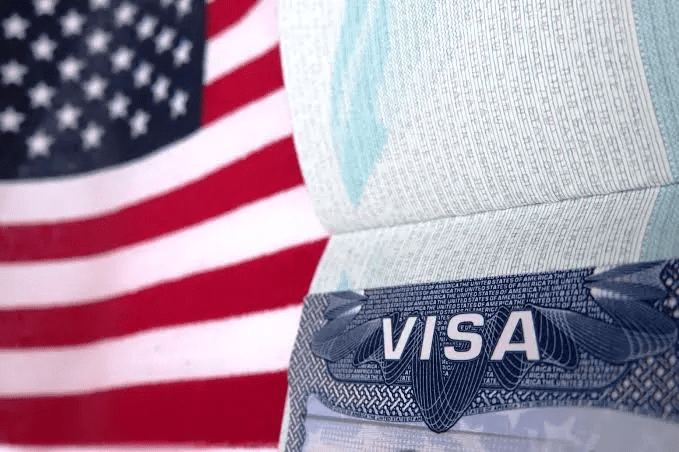Retirement is interchangeable with freedom, flexibility, and the chance to live the life you’ve always dreamed of. There will be no more commutes or alarm clocks—only the vast road ahead, full of opportunities.
Living comfortably and enjoying your golden years in a dream nation feels like a well-earned prize when you have access to such advantages. Any national can retire to the US and enjoy a comfortable, active lifestyle with excellent healthcare.
Although many people want to retire in the US, the country does not offer a specific retirement visa option. Therefore, retirees find it more difficult to settle in the United States than in other countries with retirement visas.
In this article, we’ll discuss the visa options available to individuals looking to retire in the US, including long-term visiting visas, family-based green cards, and investor visas.
We’ll also cover the standards and options in countries that offer retirement visas, comparing them with the United States to explain where to settle for a comfortable retirement.
What is a Retirement Visa?
After working in your home country for the majority of your career, you wish to live in your ideal location. After committing decades to a career or business, it is reasonable for you to want to wake up in a beautiful location.
Relocating abroad might provide you with a fresh outlook on life and a special opportunity to learn more. Retirement visas, therefore, enable you to fulfill this desire. These visas are available in many nations, giving retirees a route to permanent residence and a host of advantages.
Visa Options Available to Retire in the US

1. Retiree’s EB-5 Investor Visa
The EB-5 investor visa is among the most sensible choices for those with substantial resources. This visa provides a route to permanent residency (green card) using investment. In addition, you must have an investment worth $800,000 in targeted employment areas (TEAs) or $1,050,000 in a US company.
This visa option grants permanent residency to the applicant, spouse, and children under 21. The permanent residency will be provided with an initial two-year conditional period followed by the removal of conditions.
The EB-5 visa is ideal for those who want to retire to America and secure permanent residence. However, the process calls for careful preparation and a significant financial commitment.
2. Family-Based Green Card
You may qualify for a family-based green card if you have relatives residing in the US, particularly children who are citizens or permanent residents. A spouse, children (over 21), and a close relative who is a US citizen or permanent resident are all eligible for this visa.
The sponsoring family member must submit Form I-130; consular processing or status modification follows. The timeline is based on visa type and national quotas and can range from six months to several years.
Retiring in the US with a green card entitles you to most of the same rights as US citizens, including Medicare and other benefits.
3. B-2 Tourist Visa for Retiree Long-Term Visits
The B-2 tourist visa allows individuals without permanent status to temporarily stay in the United States. It is ideal for retirees who wish to live part-time in the United States while maintaining residency elsewhere.
The validity is usually ten years, with a stay of up to six months per entry. Remember, you cannot work or run a business while on this visa and must leave the United States after each visit.
Although the B-2 visa does not grant permanent residence, it can be renewed multiple times. It suits retirees who wish to spend half the year in the United States and the other half in another retirement visa country.
4. E-2 Investor Visa
The E-2 visa is a flexible semi-retirement visa option. Starting a small business enables the E-2 visa to provide a flexible way to live and work in the United States.
Unlike the EB-5 visa, the E-2 requires a substantial investment but does not specify a fixed amount. Eligible applicants include citizens of countries with an E-2 treaty with the United States.
The visa is valid for two years and has unlimited renewal options. It’s ideal for those wishing to run a small business while semi-retired. Though the E-2 visa requires active business involvement, it works well for those seeking semi-retirement with occasional business activity.
Important Requirements for Retiring in the United States
Planning for retirement in the US requires specific documentation and financial preparation, such as:
- Financial Proof like bank statements, investments, or pension proof to show financial self-sufficiency
- Health Insurance: New immigrants may not qualify for Medicare immediately but must obtain private insurance to cover medical costs.
- Travel Documents: Valid passport and visa approval notice or green card, if necessary.
- Application Forms, such as I-130 (family-based green card) or I-526 (EB-5 investor visa), depending on visa type.
How to Apply for the US Retirement Visas
- Choose the Right Visa Option: Determine if your retirement goals align with an EB-5, family-based green card, B-2 visa, or E-2 visa.
- Work With an Immigration Attorney: US immigration is complex, therefore, an immigration attorney can increase your chance of a smooth application.
- Prepare Documents and Financial Proof: Ensure all relevant medical records, insurance, and visa documents are ready.
- Submit Your Application: File with USCIS or the relevant US embassy if applying from outside the United States.
- Attend the Visa Interview: Be prepared to demonstrate financial independence and provide all required documentation.
How is the US Compared to Other Countries with Retirement Visas?
Many countries that offer retirement visas have developed programs specifically to attract foreign retirees with fewer barriers. These include long-term benefits, simple residency applications, and low financial thresholds. Some of the options include:
- Mexico: Offers a low-income threshold retirement visa in Mexico that is easy to qualify for.
- Costa Rica: Known for one of the easiest retirement visa policies, Costa Rica’s Pensionado program requires only a modest monthly income.
- Portugal: Among the best retirement visa countries, Portugal offers affordable healthcare and tax benefits.
- Thailand: Provides a retirement visa for individuals over 50, based on a modest pension or bank deposit.
If you’re considering countries with retirement visas for US citizens, Mexico and Costa Rica are excellent choices. They offer easier retirement procedures and proximity to the United States.
Wrapping Up
Seniors can experience the American way of life through various immigration alternatives, even if the US does not have a specific retirement visa. An EB-5 investment visa, a family-based green card, or a long-term tourist visa can all help you realize your ambition of retiring to the United States.
If the US immigration process seems complex, there are also many countries with retirement visas worth considering, such as Mexico, Costa Rica, and Portugal.
Frequently Asked Questions
What is the minimum age requirement for a retirement visa?
The minimum age requirement for a retirement visa varies by country but generally falls between 55 and 65. The Philippines is an exception, offering a retirement visa program (SRRV) with a minimum age requirement of 35.
Do I need to give up my citizenship in my home country?
The beauty of retirement visas is that you typically don’t have to renounce your home country’s citizenship. You’ll maintain your existing passport while gaining residency rights in New Haven.
How long does the retirement visa application process take?
The processing time-frame can range from a few months to a year, depending on the country and the complexity of your application. It’s wise to factor this in when planning your move.
What healthcare options are available to retirees abroad?
Healthcare options include public healthcare that may cover medicines and basic tests. You may also get private and international health insurance plans to cover bigger expenses if need be. Ensure you research the system in your chosen country.


